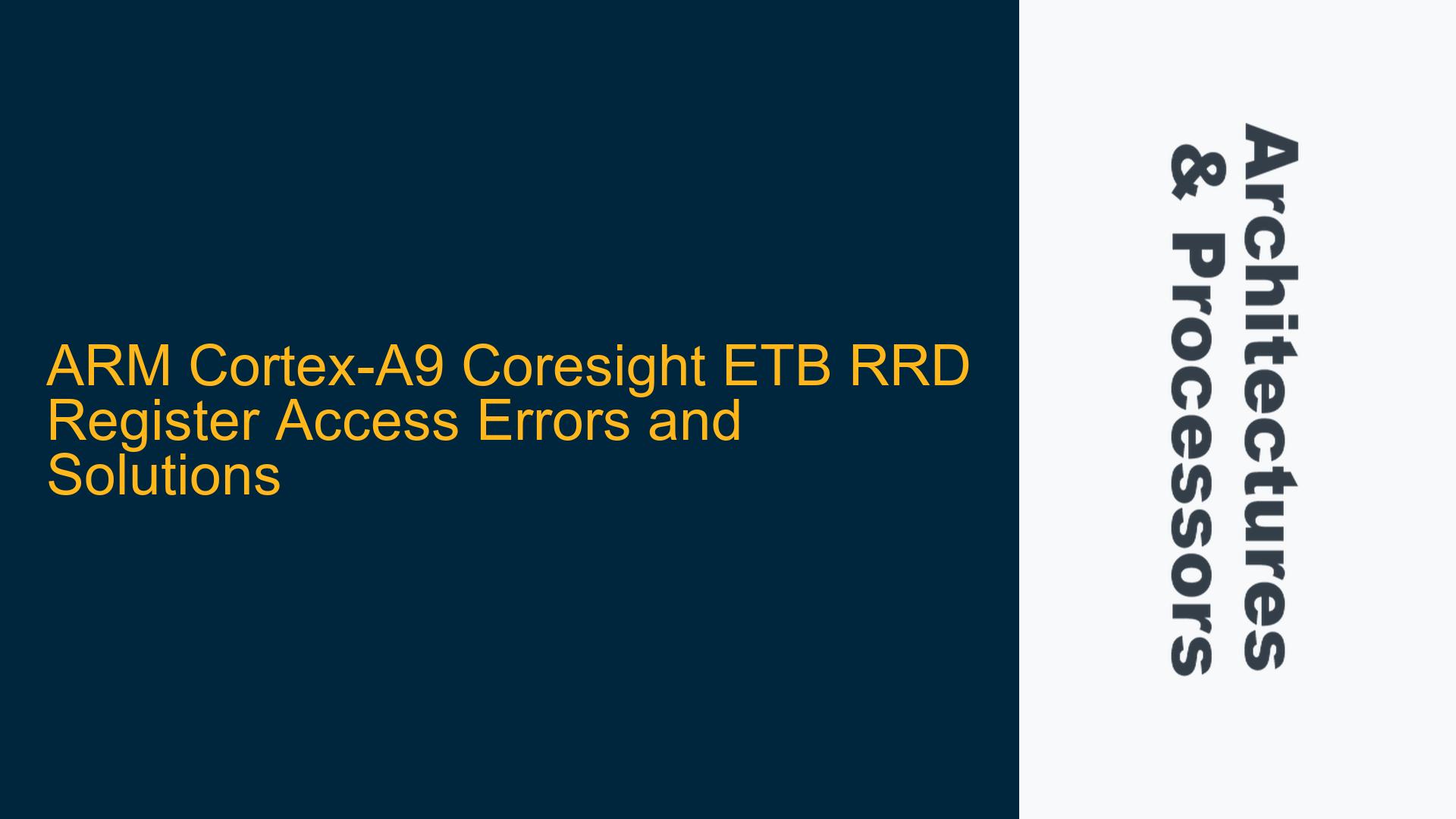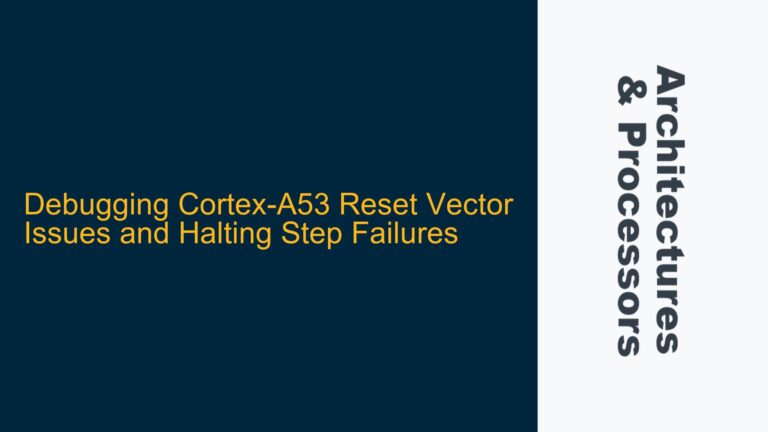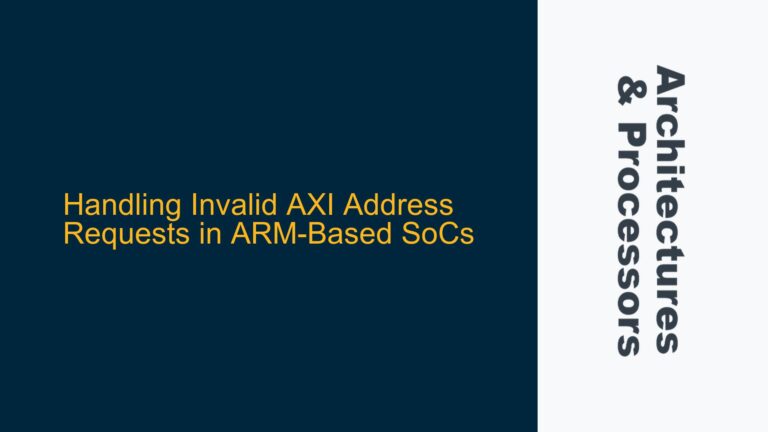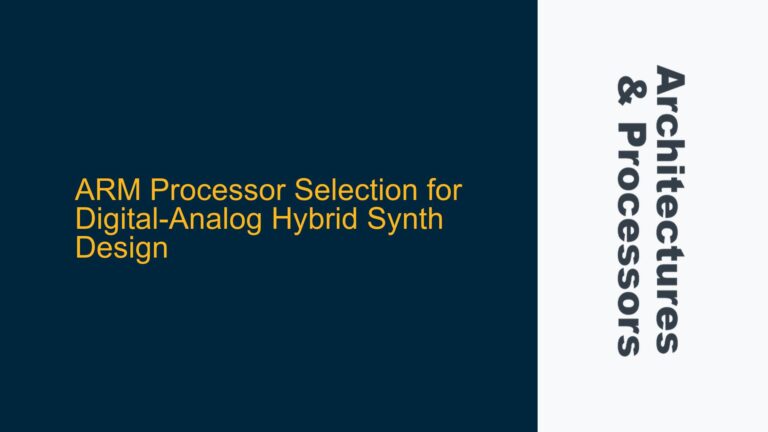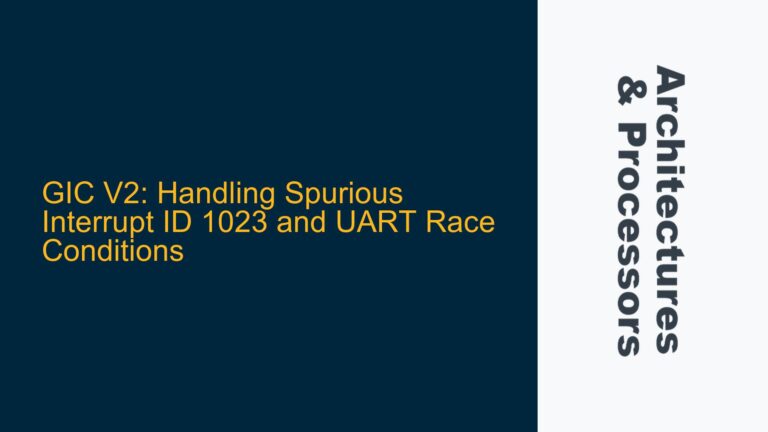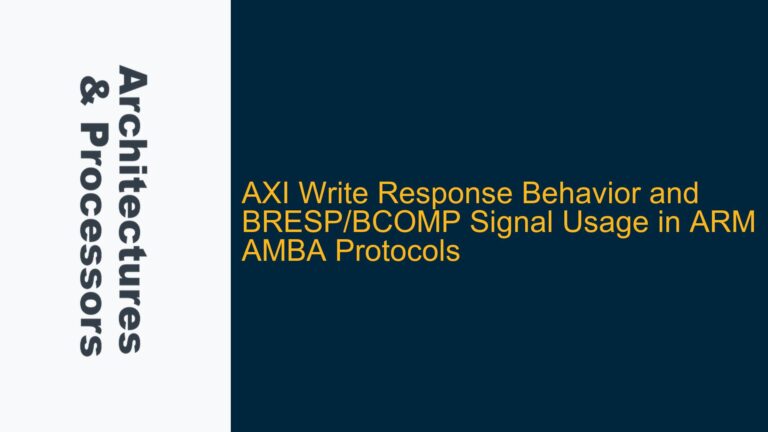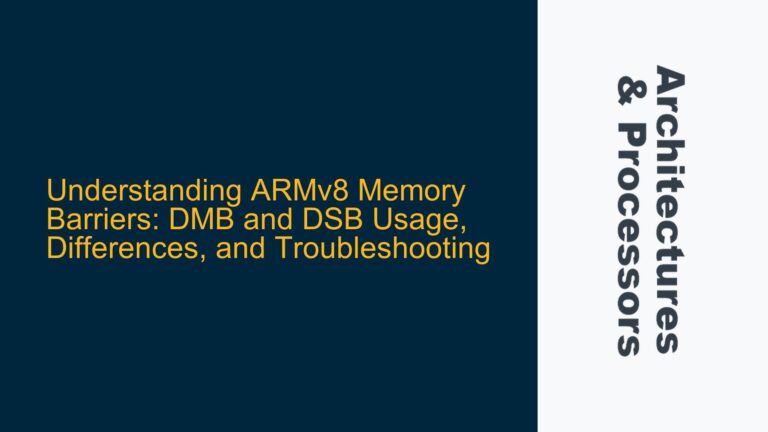Coresight ETB RRD Register Access Errors During Trace Data Retrieval
When working with ARM Cortex-A9 processors and utilizing Coresight Embedded Trace Buffer (ETB) for debugging and tracing, a common issue arises when attempting to read back trace data from the ETB RAM via the RRD (Read Response Data) register. The error message "Memory read error at 0xF8801010. Blocked address 0xF8801010. Cannot access read-once register" indicates that the RRD register is protected or inaccessible under normal circumstances. This issue is particularly prevalent in baremetal systems where direct hardware access is required, and the software stack does not include higher-level abstractions to handle such low-level interactions.
The RRD register is a critical component in the ETB architecture, responsible for holding the trace data that has been captured during program execution. The ETB itself is a circular buffer that stores trace packets generated by the Embedded Trace Macrocell (ETM) or Program Trace Macrocell (PTM). The RRD register is designed to be read-once, meaning that once the data is read, it is no longer available for subsequent reads. This design is intentional to ensure that trace data is not corrupted or overwritten during the debugging process. However, this read-once nature can lead to access issues if the proper sequence of operations is not followed.
The error message suggests that the RRD register is being accessed in a manner that violates its read-once protection mechanism. This could be due to several factors, including incorrect configuration of the ETB, improper handling of the trace data retrieval process, or even hardware-specific quirks. Understanding the root cause of this issue requires a deep dive into the ETB architecture, the role of the RRD register, and the sequence of operations required to safely retrieve trace data.
ETB Configuration and RRD Register Protection Mechanisms
The ETB is a complex component that requires careful configuration to ensure proper operation. The RRD register is protected by several mechanisms to prevent accidental or unauthorized access. One of the primary protection mechanisms is the read-once nature of the RRD register. Once the data is read from the RRD register, it is no longer available for subsequent reads. This is intended to prevent data corruption and ensure that the trace data is accurately captured and retrieved.
Another protection mechanism is the use of the RWP (Read Write Pointer) register, which keeps track of the current position in the ETB RAM. The RWP register is incremented as trace data is written to the ETB RAM, and it is used to determine the amount of data that has been captured. When attempting to read the RRD register, the RWP register must be properly synchronized to ensure that the correct data is being read. If the RWP register is not properly synchronized, it can lead to access errors or incorrect data being retrieved.
In addition to the read-once and RWP protection mechanisms, the ETB also employs a series of control registers that must be properly configured to enable trace data capture and retrieval. These control registers include the ETB Control Register (ETB_CR), the ETB Status Register (ETB_SR), and the ETB Trigger Register (ETB_TR). Each of these registers plays a critical role in the operation of the ETB, and any misconfiguration can lead to access errors or incorrect trace data.
The ETB_CR is used to enable or disable the ETB, configure the trace mode, and set the buffer size. The ETB_SR provides status information about the ETB, including whether the buffer is full or empty. The ETB_TR is used to configure the trigger conditions for starting and stopping trace data capture. Proper configuration of these registers is essential to ensure that the ETB operates correctly and that trace data can be retrieved without errors.
Implementing Proper ETB Configuration and Data Retrieval Procedures
To resolve the RRD register access errors and ensure successful trace data retrieval, a series of steps must be followed to properly configure the ETB and handle the trace data retrieval process. These steps include configuring the ETB control registers, enabling the ETB, capturing trace data, and safely retrieving the data from the RRD register.
The first step is to configure the ETB control registers. This involves setting the appropriate values in the ETB_CR, ETB_SR, and ETB_TR registers to enable the ETB, configure the trace mode, and set the buffer size. The ETB_CR should be configured to enable the ETB and set the trace mode to the desired configuration (e.g., circular buffer mode). The ETB_SR should be checked to ensure that the ETB is ready to capture trace data. The ETB_TR should be configured to set the trigger conditions for starting and stopping trace data capture.
Once the ETB control registers are properly configured, the next step is to enable the ETB and start capturing trace data. This involves setting the appropriate bit in the ETB_CR to enable the ETB and starting the trace data capture process. The RWP register should be monitored to ensure that trace data is being written to the ETB RAM. As the program executes, the RWP register will increment, indicating that trace data is being captured.
After the program has completed execution, the next step is to retrieve the trace data from the ETB RAM. This involves reading the RRD register to access the trace data. However, due to the read-once nature of the RRD register, it is essential to follow the proper sequence of operations to ensure that the data is retrieved correctly. This includes disabling the ETB, flushing the buffer, and reading the RRD register in the correct order.
Disabling the ETB involves clearing the appropriate bit in the ETB_CR to stop the trace data capture process. Flushing the buffer ensures that any remaining trace data is written to the ETB RAM before attempting to read the RRD register. Once the buffer is flushed, the RRD register can be read to retrieve the trace data. It is important to note that the RRD register can only be read once, so it is essential to ensure that the data is captured and stored before attempting to read it again.
In some cases, the RRD register may still be inaccessible due to hardware-specific quirks or additional protection mechanisms. In these cases, using the ‘-force’ directive in the command to access the RRD register may be necessary. This directive overrides the read-once protection mechanism and allows the RRD register to be accessed even if it has already been read. However, this should be used with caution, as it can lead to data corruption or incorrect trace data if not used properly.
In conclusion, accessing the RRD register in the ARM Cortex-A9 Coresight ETB requires careful configuration of the ETB control registers, proper handling of the trace data retrieval process, and an understanding of the protection mechanisms in place. By following the steps outlined above, it is possible to resolve the RRD register access errors and successfully retrieve trace data from the ETB RAM. Proper configuration and handling of the ETB are essential to ensure accurate and reliable trace data capture and retrieval, which is critical for effective debugging and performance analysis in embedded systems.
